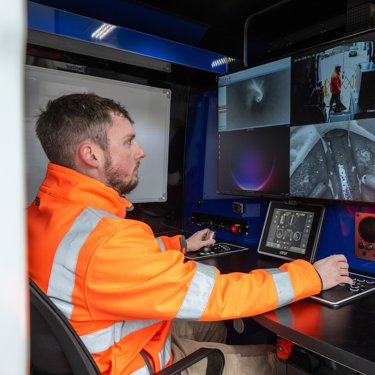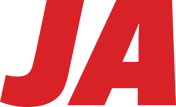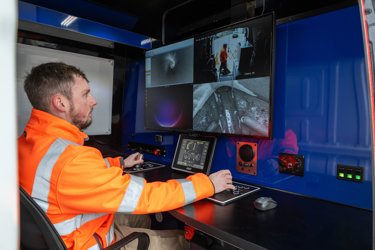
Drainage mapping
Book drainage mapping assessment
Please leave your details and a member of our team will reach out to discuss your requirements in more detail and arrange next steps.
Drainage mapping helps you understand the layout and condition of your drainage to ensure compliance and reduce the risk of pollution.
Having an up-to-date drain plan in place is critical for effectively mitigating the environmental risks associated with your site. Drainage systems have the potential to swiftly transport pollutants off site, which could result in an environmental compliance breach.
- Foul water will travel to a treatment works either under gravity or via a pumping or lifting system.
- Surface water will enter a watercourse at some point.
Book drainage mapping assessment
Please leave your details and a member of our team will reach out to discuss your requirements in more detail and arrange next steps.
Pollution prevention guidance
Pollution prevention guidance states you must have a drain plan. It is important to make a plan of your drains to ensure you use them correctly, carry out maintenance, and deal more effectively with pollution if there’s a spill, leak or other incident.
Your drain plan should show:
- where drains are located;
- types of drains (surface water, foul water, or combined);
- direction of flow;
- where drains leave your property; and
- where drains discharge into (a watercourse, clean-water soakaway, or sewage treatment works, for example).
Everyone who works at the site should be able to easily find and understand the plan.
If you make changes to your site, you should check your drain plan to make sure you do not connect to the wrong drains and update your plan with the changes.
Do you have records relating to the drainage assets within your site?
Do you know where your drainage is on your site, and whether it connects to other infrastructure, i.e. combined public sewer system, or separate foul water and surface water system?
If you do not have this information to hand, you could be risking prosecution. If you pollute, you could get an unlimited fine, go to prison for up to 5 years, or both. You may also have to pay for the whole cost of the clean-up. We know the law and can help you comply with it.
Ready to book a drainage mapping assessment?
If you’re unsure where your drains run, what condition they’re in, or how they connect to wider infrastructure, now is the time to take action. A drainage mapping assessment gives you the clarity you need to manage environmental risks, stay compliant with regulations, and avoid costly mistakes.
What you'll receive after our site visit
- Drainage map and connectivity survey
- CCTV condition survey and report
- Cost recommendations and quotation for remedial works
Whether you’re preparing for a site change, responding to regulatory requirements, or simply want peace of mind, a drainage map is a practical step forward. It helps you identify high-risk areas, locate underground assets, and plan maintenance more effectively.
Don’t wait for a pollution incident or compliance breach to highlight the gaps. Book your drainage mapping assessment today and take a proactive step towards better site management.
Book drainage mapping assessment
Please leave your details and a member of our team will reach out to discuss your requirements in more detail and arrange next steps.
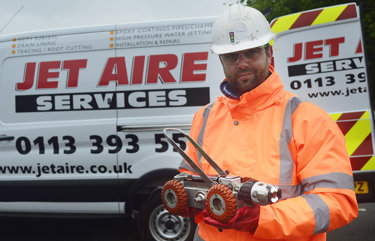
Why do you need a drainage map?
Location and direction
Understand the location and directional flow of your surface water, foul water and combined drains.
Exit and high-risk
Pinpoint where your drainage system exits the site, so you can identify the high-risk areas.
Other assets
Identify any other underground assets such as separators, attenuation tanks, pump stations, and inspection chambers.
Condition
Assess the condition of your drains, ensuring any defects are identified to enable remediation works.
Compliance
Ensure compliance with pollution prevention and guidelines, and be able to manage the risks of a pollution incident.
Proactive maintenance to keep your drains flowing freely
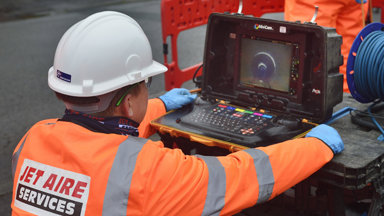
Firstly, our CCTV team will attend site and carry out a detailed survey.
If the system is dirty, then jetting should ensure we can survey most lines unless there are collapses or major displaced joints, roots, foreign objects, etc.
We'll use the CCTV survey to grade any defects in the system.
Supplementary services
- Topographic survey: Provides details of other services and features located on-site with exact locations and heights mapped (offered via a subcontractor).
- GPS logging: Provides GS locations of manholes.
- Sonde tracing: Where a pipe does not travel in a straight-line manhole to manhole, we can plot the route using a sonde.
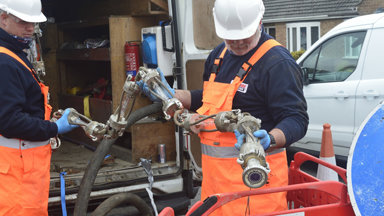
Next, we begin remediation works by bringing the system into a condition that operates efficiently, reducing the risk of downtime on site or a pollution incident happening.
This could include:
- Root cutting
- Further cleaning of deposits
- Localised repairs through patching
- Lining to renew the asset without the need for excavations
- Repairs via excavations where required
- Installation of non-return valves, pumping stations, or separators
We'll also highlight any identified risks, for instance:
- Misconnections where foul is entering the surface system
- Anywhere that could allow a pollutant to enter the drainage system
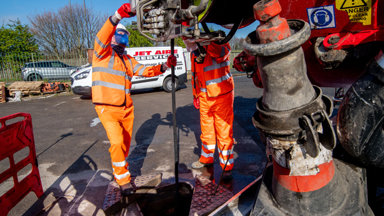
Finally, to ensure ongoing compliance on your site, we recommend establishing a regular planned preventive maintenance contract following the drainage mapping exercise and completion of any associated remedial works.
We'll suggest a suitable timeframe for regular works which we can undertake, including:
- Interceptor cleaning and inspection
- Pump station servicing
- Septic tank draining
- Gully cleaning
Understand the layout and condition of your site’s drainage system
Contact us today to book your drainage mapping assessment.
Book drainage mapping assessment
Please leave your details and a member of our team will reach out to discuss your requirements in more detail and arrange next steps.
